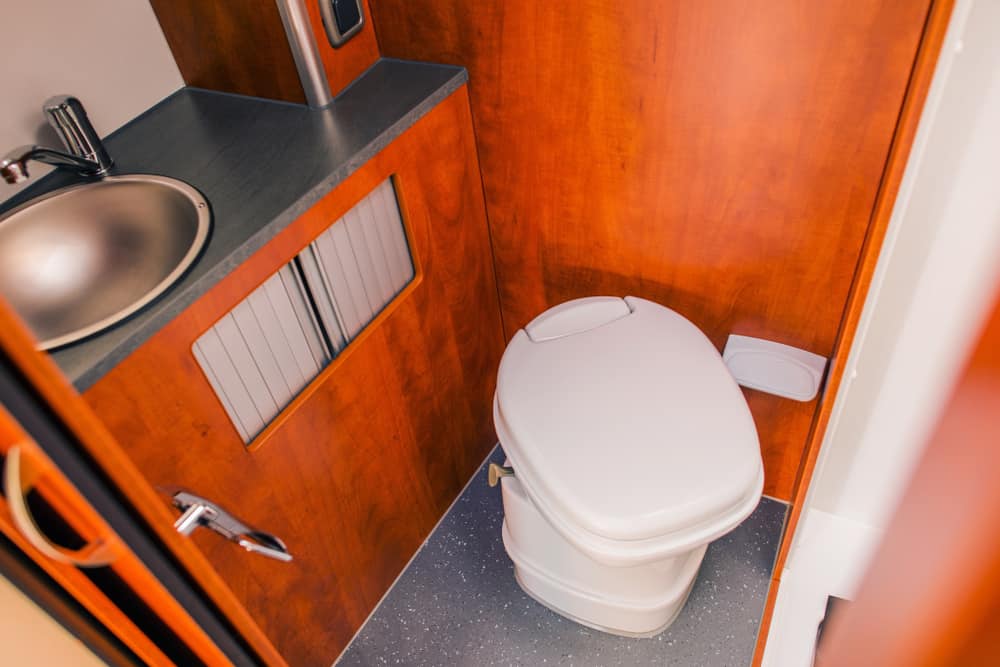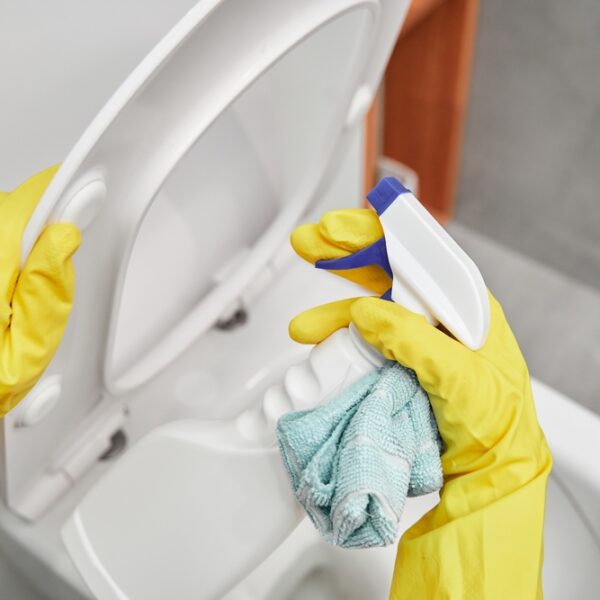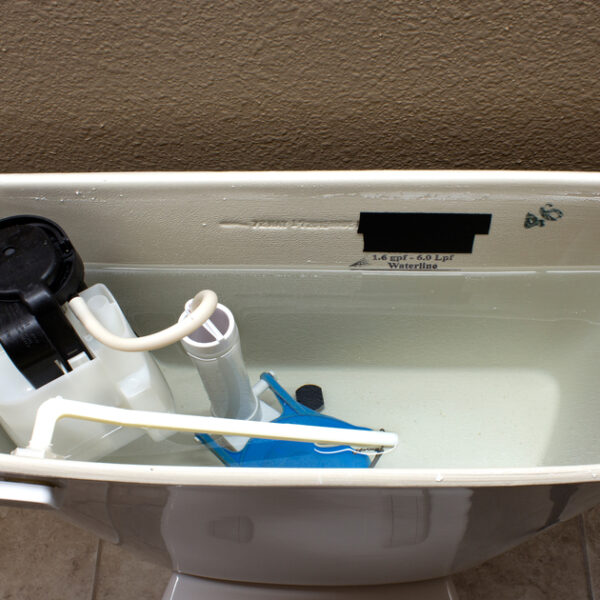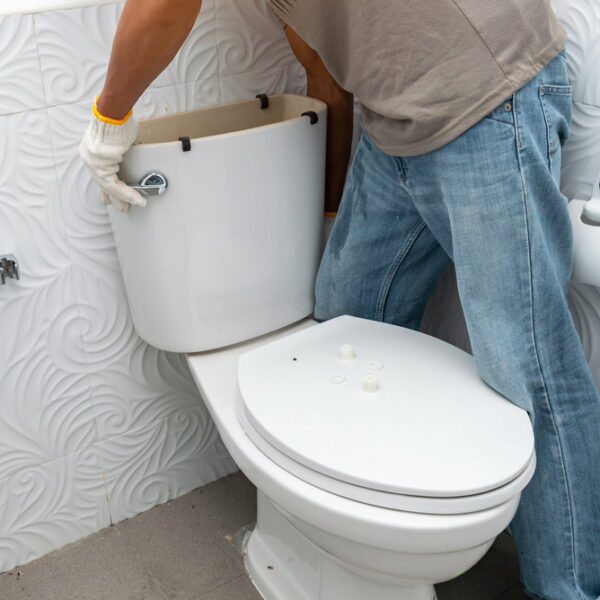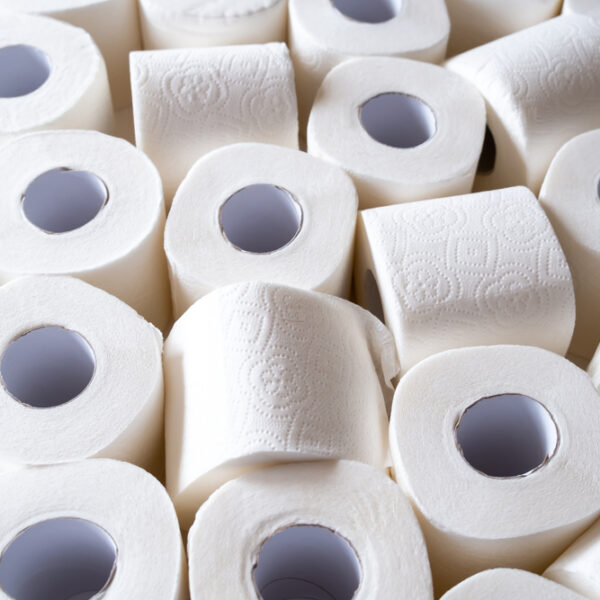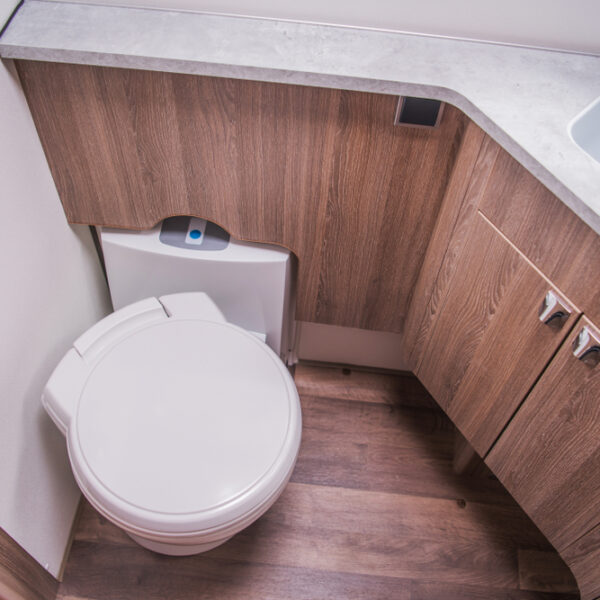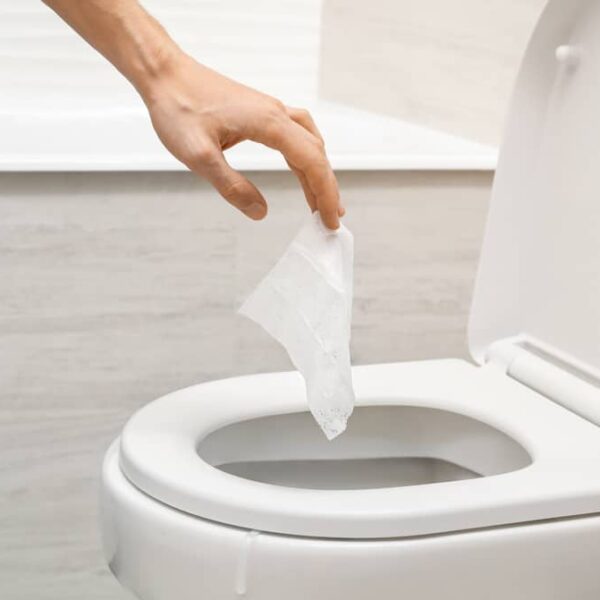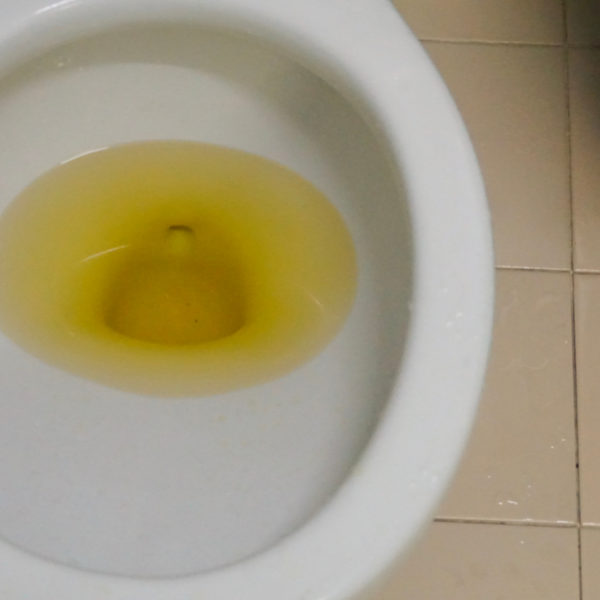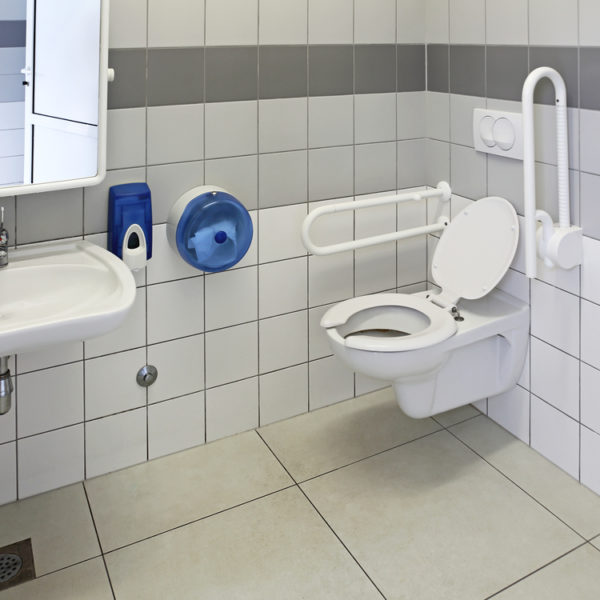Spending time in an RV is such a wonderful experience – you have the freedom of the open road, but you also have your home comforts that you can’t take when you go camping in a tent. That is until something goes wrong – and one thing that can go wrong is the toilet.
If your RV toilet gets blocked, it can quickly spoil your whole trip, so to help you prevent it from happening – as well as telling you what to do if it does – here we tell you how to unclog a camper toilet so you can get the job done quickly and with a minimum of fuss.
Understanding the four main reasons for clogged RV toilets
When it comes to RV toilets getting blocked, there are only four main causes, so let’s introduce them and talk about why each of them happens.
1. Pyramid plug
The pyramid is the most common reason for RV toilets to become blocked, and it’s usually caused by someone leaving the draining valve on their black tank open, often when the owner is staying at a site with full-hookups.
Usually, when the valve is closed, all waste – both liquid and solid – is collected in the toilet’s holding tank.
However, if you leave the valve open, the liquid waste will drain straight out of the tank, leaving only the solid waste.
When this happens, instead of being spread out evenly over the bottom of the tank, the solid waste, including poop and toilet paper, begins to pile up like a pyramid, hence the name.
Eventually, the pile of waste will reach the bottom of the toilet, preventing any more waste from passing from the toilet into the tank – and when this happens, your toilet will start backing up and you will have a clog to deal with.
2. Clogged pipe
Less common than a pyramid plug but also very possible is a clogged pipe.
Most RV toilets sit directly above the RV toilet holding tank below, so waste just drops down into it and clogged plumbing is unlikely.
However, if you have a system where the waste is flushed down a pipe – especially one with bends or “elbows” – there’s a greater chance of paper and human waste getting stuck and causing a blockage.
3. Compacted waste in the black tank
The third type of blockage is usually caused when a tank is not emptied and is then left in storage for an extended period.
Since black tanks aren’t hermetic, the moisture inside will slowly evaporate off, leaving only the solid waste behind. This will dry out and become hard, and then when you try to empty the tank, nothing will be able to get past the solid blockage.
4. Sensor error
The fourth kind of blockage is actually not a true blockage at all – it’s just your tank making you think you have one.
Inside the tank, there are usually a set of sensors. When the tank is full, it completes an electrical circuit, at which point the tank tells you it needs emptying.
However, sometimes, solid waste and toilet paper can get stuck to the sensors, tricking them into thinking the tank is full. Then, when you go to empty it, little or nothing comes out, and so you may mistakenly think the tank is blocked.
How to work out which problem you’re facing
If you have a clog in your camper toilet, the first thing you need to do is diagnose which kind of blockage you are facing since this will determine how you go about unblocking it.
Here are how to identify each of the four kinds of blockage we’ve just looked at.
1. Pyramid plug
Since pyramid plugs are the most common type of blockage, it’s likely this is what you’re dealing with.
The first sign that you have a pyramid plug is that your toilet no longer flushes and that the water starts backing up.
At first, it may flush partially, but eventually, the water won’t drain at all and will just sit in your toilet bowl.
Since no waste is going into the tank, nothing will come out when you try to drain it either.
As we shall see in just a moment, these are symptoms that are shared with pipe blockages – but the way to tell if it’s a pyramid plug is to ask yourself if you’ve left the valve open recently.
If you have, there’s a high chance that it’s a pyramid plug since leaving the valve open is exactly what usually causes them.
2. Blocked pipe
At first, it can be hard to tell whether a blockage is due to a pyramid plug or a clogged pipe. This is because the symptoms appear the same – the toilet will begin to drain slowly and then will back up completely, and nothing will come out when you try to empty the tank.
However, if you are sure you haven’t left the valve open, it is more likely that you’re facing a blocked pipe than a pyramid plug since plugs usually form when the valve is left open and liquid waste is allowed to drain out.
3. Compacted waste
Compacted waste is easy to diagnose since it behaves differently from blocked pipes or pyramid plugs.
With compacted waste, you should be able to use the toilet, and when you flush, everything should be washed into the tank.
However, with this kind of blockage, when you try to empty the tank, you will find that nothing comes out at all – because any liquid waste that you flushed into the tank is sitting on top of a hard layer of dried solid waste.
4. Sensor error
If, on the other hand, you can flush water into the tank and you can drain waste out of the other end, it is most likely to be a sensor failure – which means you don’t have a blockage at all.
How to fix each type of Camper Toilet clog
So now we understand how to work out which type of clog you have, let’s move on to talking about what to do about each type – without turning to harsh chemicals.
1. Pyramid plug
If you have established that the blockage is due to a pyramid plug, start by closing up the valve used to empty the holding tank.
The best treatment for a pyramid plug is to use an enzyme designed for cleaning and unblocking septic tanks. The enzyme will work on the poop and paper, dissolving it away and unclogging the toilet.
Take the bottle of enzyme and pour it all into your toilet and leave it to do its work. The downside of this technique is that it takes a long time to take effect, but the longer you can leave it, the better. If you can, leave it for between 24 and 72 hours.
If the enzyme is at least able to open up a channel through the pyramid, you can then pour as much water into the toilet as possible. This water mixed with the enzyme will continue to work on the rest of the pyramid, eventually dissolving it and clearing the blockage.
However, sometimes the enzyme alone won’t be able to open up a channel into the tank, so you’ll have to help it.
The best way to do this is to use a plumber’s snake, also known as a toilet snake or toilet auger, to help push through the pyramid.
Push the snake into the toilet until you reach the blockage and then pull it and push it and spin it around to try to dislodge as much of the pyramid as you can.
If you succeed in breaking through the pyramid, you can then pour in some water and leave the enzyme and water to break down the rest of the pyramid.
2. Blocked pipe
If you think the blockage is due to a blocked pipe, the first thing you can try is a good old-fashioned plunger.
Pour enough water into the toilet bowl to cover the bottom of the plunger, place the plunger over the toilet’s hole and plunge vigorously a few times. With any luck, the pressure from the plunger may be sufficient to dislodge the blockage.
After the plunger, the next thing to try is a bottle of enzyme – simply pour the liquid into the toilet and leave it to sit overnight or for at least 24 hours if possible. Then you can check to see if it has had the desired effect.
If this doesn’t work – or if you can’t wait for the enzyme to work – you can also try a plumber’s snake. Push the coil into the toilet until you reach the blockage, hook it into the blockage and then try to pull it up.
Be careful when you do this because whatever’s blocking the toilet is likely to be pulled back up into the bowl, and it’s going to be pretty nasty – so take care not to splash it onto your skin or into your eyes. Wearing gloves and goggles is advisable.
3. Compacted waste in the tank
If your blockage is due to dried up or compacted waste, it should be easy to fix – but it will take time.
For this problem, all you have to do is pour a bottle of enzyme into the toilet followed by some water. This will start breaking up the waste that’s stuck in the bottom of your tank, and eventually, you will be able to drain it out.
When it’s ready, run the rinser for around half an hour and then try draining the tank. If it doesn’t drain, just give it a bit longer – and try tapping the discharge pipe gently since this may dislodge some dried-on waste, finally allowing everything to flow out.
Unfortunately, this method is likely to take several days, and it’s not a process you can accelerate, so you’ll have to do it when you won’t need to use the toilet.
How to prevent RV toilet clogs
If you’ve unblocked your RV toilet, you’ll probably want to avoid the situation repeating – and if you’ve never had a clog, it’s not something you’re likely to want to experience – so here are a few tips to ensure it doesn’t happen.
1. Use the correct toilet paper
A common cause of blocked pipes is people using the wrong type of toilet paper in their RVs. Camper toilets aren’t designed to take regular paper, so make sure you use septic-friendly paper. This way, the risk of blocked pipes will be much lower.
2. Throw toilet paper into a separate basket
Alternatively, don’t throw toilet paper into the toilet at all – instead, throw it into a separate basket.
Some people might find this a little disgusting at first, but it’s something you quickly get used to – and it has several advantages.
If you don’t throw any paper into your toilet, you significantly reduce the possibility of a clog, and at the same time, you can use whatever type of regular toilet paper you like – you don’t need to stick to RV paper.
Finally, you won’t have to empty the black water tank as often, so with all these advantages, for many people, this will seem like a smart option.
3. Don’t leave the valve open
As we have seen, leaving the valve open is the usual cause of pyramid plugs, the most common type of blockage. This means that simply by not leaving the black tank valve open, you can reduce the risk of one of these clogs developing.
4. Take action early
If you suspect your toilet is becoming blocked, take action immediately instead of waiting for the problem to get worse.
Things like bad odors coming up through your toilet and the toilet draining more slowly than normal are telltale signs that a blockage is forming.
Then, if you act quickly, you should be able to clear any build-ups with just a plunger or a bottle of enzyme rather than resorting to things like plumber’s snakes.
5. Consider breaking up particularly large or solid poops
If you have particularly hard or long poops, consider cutting them up before flushing. This might sound like a pretty awful thing to have to do, but these large, hard poops are more likely to block a toilet – and unblocking a toilet can be an even more unpleasant job.
A few other suggestions to try
Finally, here are a few other ideas you can try to unblock an RV toilet if you don’t have the necessary tools or products to hand that we’ve recommended above.
-
Boiling water
Pouring a bucket of hot water into your toilet may help dissolve a blockage and clear the clog.
-
Bicarbonate of soda and vinegar
Pour some bicarbonate of soda into your toilet followed by some white vinegar and wash it into the toilet. The reaction they create together may help dislodge a blockage.
-
Dish soap
Pouring dish soap into the toilet with some warm water may clear a slight blockage – but it’s unlikely to clear anything more significant.
Not a fun job – but not too difficult either
Nobody wants a blocked RV toilet, and nobody wants to have to deal with one. However, the good news is that it’s not usually something that’s too difficult to resolve, and with the information in this post, you now know how to do it.
